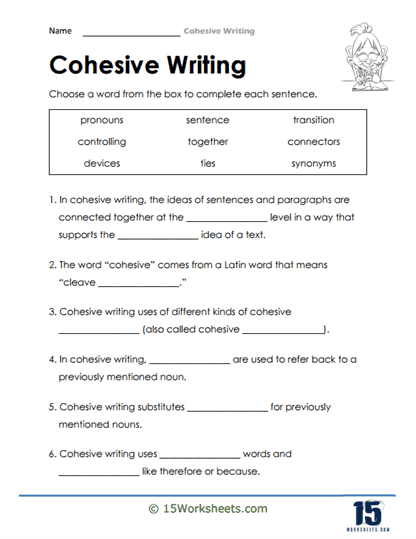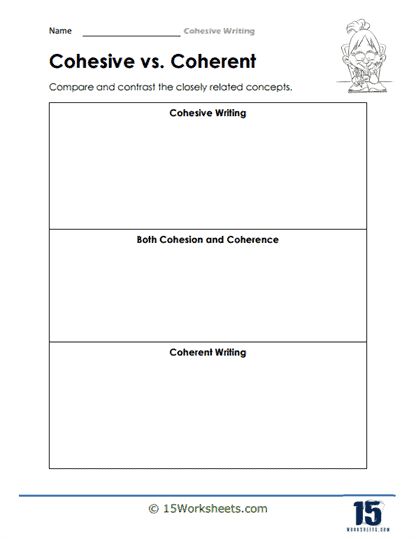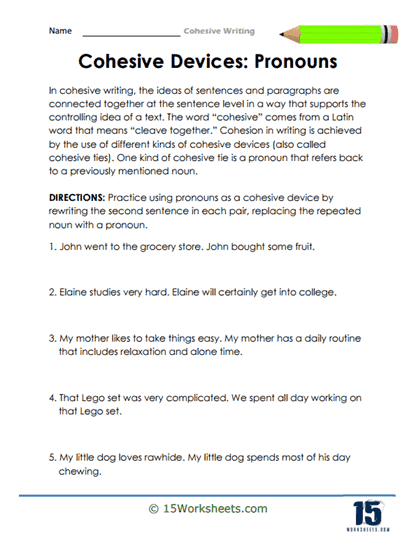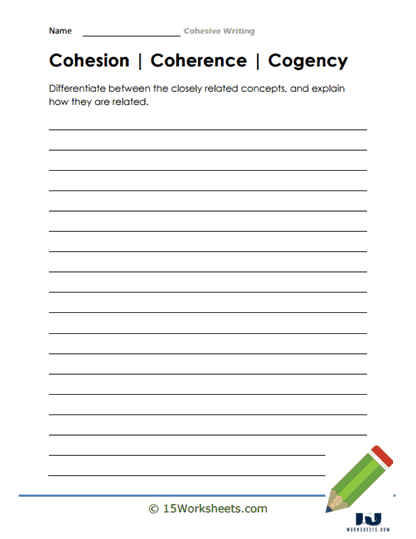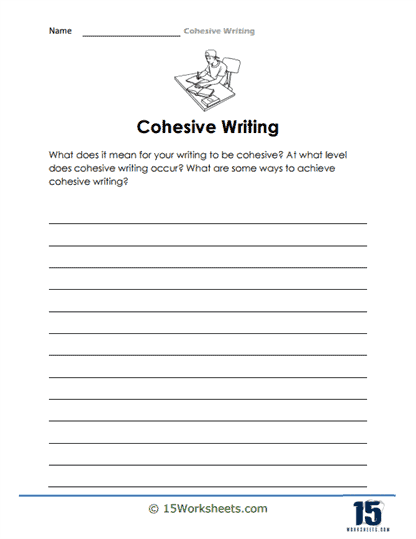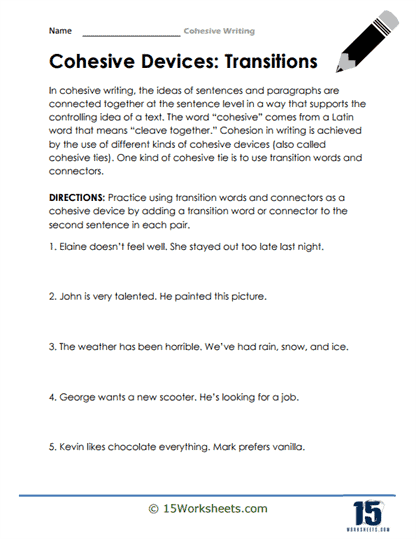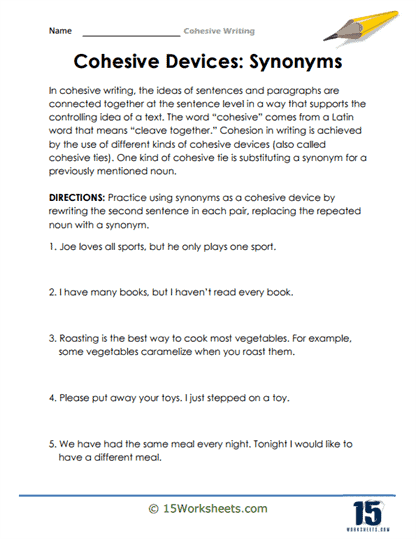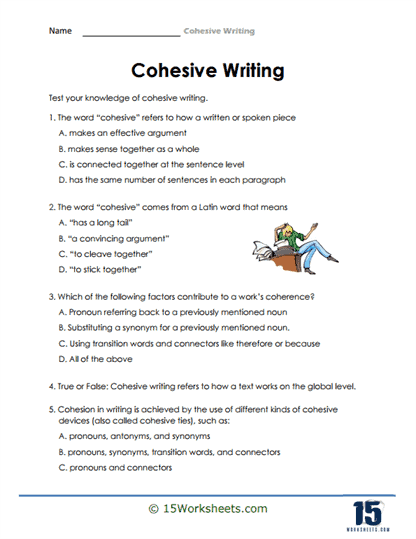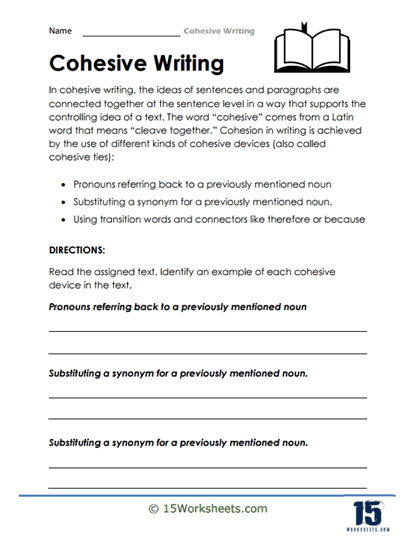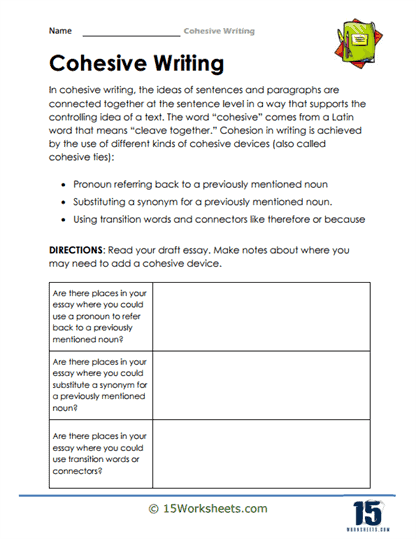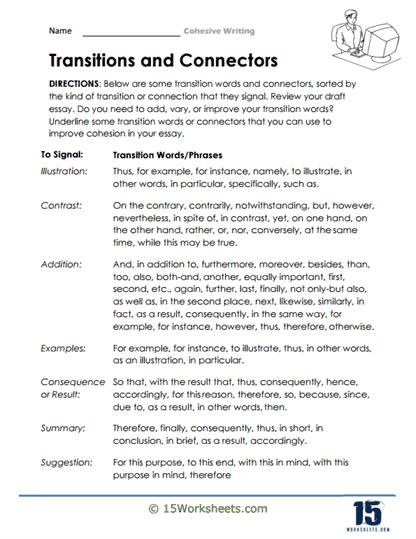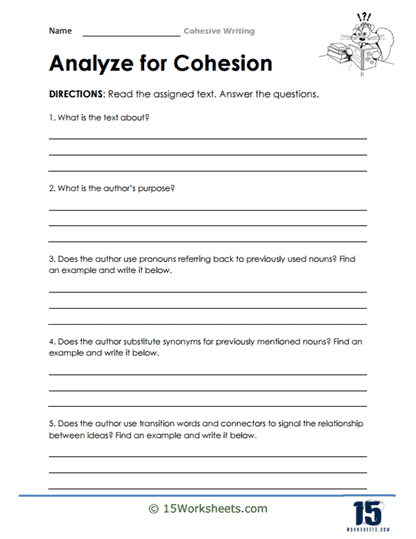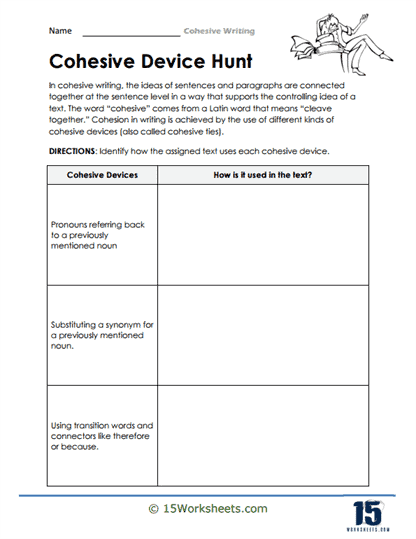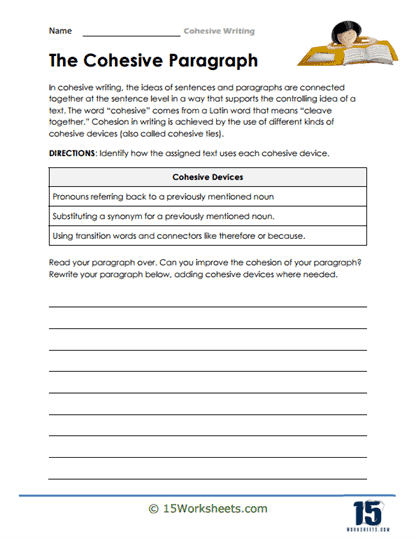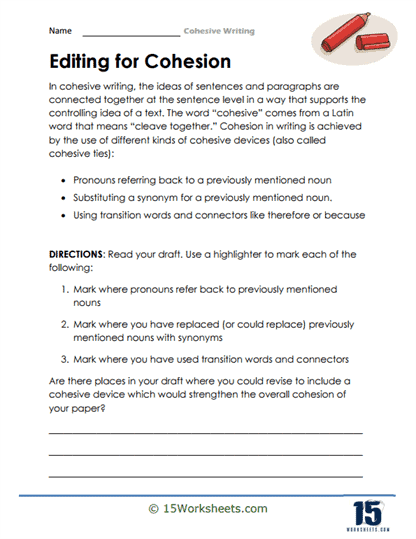Cohesive Writing Worksheets
All About These 15 Worksheets
This series of 15 worksheets is designed to help students develop the skills necessary for creating coherent and well-connected written pieces. Each worksheet provides students with guided exercises and interactive activities to enhance their understanding and application of cohesive writing techniques.
This series caters to students across different grade levels and language proficiency levels, offering a range of worksheets that cover various aspects of cohesive writing. Through these worksheets, students will:
- Learn a variety of cohesive devices, such as transitional words and phrases, conjunctions, and pronouns;
- Compare and contrast Cohesive Writing and Coherent Writing;
- Identify cohesive devices;
- Understand when to utilize cohesive devices in their writing;
- Analyze assigned texts to distinguish the cohesive devices used and how the author executed their technique;
- And rewrite paragraphs to improve their cohesion.
Overall, this series of worksheets serves as a valuable resource for teachers seeking to enhance their students’ writing skills and improve the coherence of their written work. By engaging with these worksheets, students develop the abilities to create cohesive and well-connected texts, ensuring their ideas flow logically and engage their readers effectively.
What is Cohesive Writing?
A good piece of writing must have a strong sense of cohesion to be effective. It is easier for readers to follow a piece of writing when it is written logically and cohesively. Text cohesiveness can be improved in various ways, including the use of logical conjunctions, grammatical references, lexical choice, and paragraphing.
A cohesive writing piece has three parts – the beginning, middle, and end. These parts work together to help you convince your reader, let them gain new knowledge, or be persuaded in a way you want them to.
Characteristics of Cohesive Writing
The following are the characteristics of cohesive writing:
- Single, well-structured sentences at the beginning of each paragraph.
- Focus on a single primary point in each paragraph.
- Extended main point by providing adequate facts, examples, or personal experiences.
- Making use of transitional language.
- Adequate cohesive device utilization.
- No repetition. Usage of pronouns and synonyms is encouraged.
- A summary phrase wraps up the paragraph or connects to the next.
How to Write a Piece Cohesively
You can write a piece cohesively by incorporating the following advice:
1. Include Relevant Pointers Only
One of the most typical blunders made by writers is to include a lot of irrelevant facts in their pieces, even if they are engaging. Another issue is the tendency to quickly leap from one notion to the next. It can be confusing to a reader who is unfamiliar with the subject matter.
2. Make an Outline
Many challenges can be avoided by creating an outline beforehand. Make a list of all the concepts you want to include in your essay, and see if you can organize them so your audience can quickly grasp what you’re trying to communicate.
You can also include the points you made in your introduction when writing the conclusion of your essay. It is a great place to start when it comes to summarizing and reinforcing what you might have mentioned earlier.
3. Make Sure All the Pieces Fit Together
Each essay component should be logically connected to the one before it, as stated in the preceding paragraph. Your piece should follow a logical path from start to finish with a beginning, middle, and end.
4. Always Proofread!
Remember to proofread your work before sending it. Because this is the first time you’ve put your thoughts on paper, your first draught may be a little unorganized. You’ll be able to tell which portions of your piece need to be reworked and which ones may be reorganized to make it easier for your readers to follow.
5. Use Transitional Words
It is important to use transitions to help the reader go from one paragraph or thought to another. These words and phrases function as signals to the reader. Writing transitional words like later or after might help illustrate the passage of time. Transitional phrases like “for instance” can be used to introduce examples.
Transitions can be used to highlight comparisons, similarities, summaries, and even cause-and-effect relationships between two or more concepts. In literary works, they are valuable markers for illustrating the connection between ideas and providing cohesion and flow.
6. Be Consistent
Using a constant point of view is another method to make your work more cohesive. Establish a point of view and maintain it throughout the entire piece of writing.
7. Repeating Elements
The use of framing methods can help create cohesion in a piece of writing. It is common to see framing devices at the beginning and end of literary works.
8. Parallelism
Writers employ parallelism as the last method of enhancing cohesiveness. It arises when the same grammatical form is used to express two or more conceptually similar concepts.

